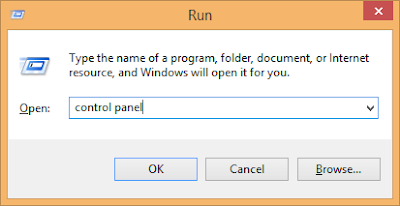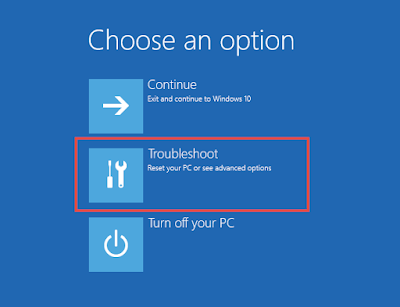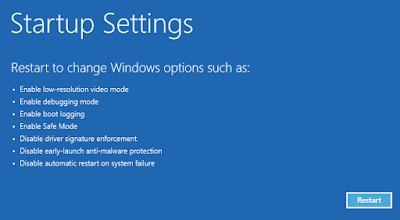17g4ojSxBNCUr9zjR56ojpQPMLzHpELzhL
Tips For Removing 17g4ojSxBNCUr9zjR56ojpQPMLzHpELzhL from Firefox
17g4ojSxBNCUr9zjR56ojpQPMLzHpELzhL causes following error 0x00000048, Error 0xC0000001, 0x000000D5, 0x80248008 WU_E_DS_MISSINGDATA The data store is missing required information or has a NULL in a table column that requires a non-null value., 0x8024402C WU_E_PT_WINHTTP_NAME_NOT_RESOLVED Same as ERROR_WINHTTP_NAME_NOT_RESOLVED - the proxy server or target server name cannot be resolved., 0x00000121, 0x000000CE, 0x80248016 WU_E_DS_DECLINENOTALLOWED A request to hide an update was declined because it is a mandatory update or because it was deployed with a deadline., Error 0x80240020, 0x80242004 WU_E_UH_DOESNOTSUPPORTACTION A request for the handler to install (uninstall) an update could not be completed because the update does not support install (uninstall)., 0xf0815 CBS_E_INVALID_CARDINALITY invalid cardinality, 0x8024401E WU_E_PT_HTTP_STATUS_GONE Same as HTTP status 410 - requested resource is no longer available at the server.Easy Steps To Delete 17g4ojSxBNCUr9zjR56ojpQPMLzHpELzhL From Infected System
17g4ojSxBNCUr9zjR56ojpQPMLzHpELzhL is detected as a perilous System threat which can harm your System data and files very badly. It intrudes your System silently and secretly so that you will not identify its presence easily and it can spread itself as much as possible. It can corrupt your data and make it inaccessible. Moreover, it can cause your System to degrade its performance and applications to respond slowly.
You can infect your System in many ways like when you open a spam email, visit some unknown and untrusted site, clicking malicious ads or pop-ups and many other ways. But one important method used by 17g4ojSxBNCUr9zjR56ojpQPMLzHpELzhL is bundling method in which it gets installed directly with the installation of free downloads. On its arrival into the system, it can almost disturbs the internal settings and functioning of the System. Hence, if you find such malware into the System, you need to Delete it.
Guide 1 : Efface 17g4ojSxBNCUr9zjR56ojpQPMLzHpELzhL From Firefox In System
Guide 2 : Efface 17g4ojSxBNCUr9zjR56ojpQPMLzHpELzhL From Control Panel In System
Guide 3 : Efface 17g4ojSxBNCUr9zjR56ojpQPMLzHpELzhL From Registry Entry In System
Guide 4 : Efface 17g4ojSxBNCUr9zjR56ojpQPMLzHpELzhL From Task Manager In System
Guide 5 : Guides To Start System In Safe Mode
Tips To Effectively Delete 17g4ojSxBNCUr9zjR56ojpQPMLzHpELzhL From Your System
Guide 1 : Efface 17g4ojSxBNCUr9zjR56ojpQPMLzHpELzhL From Firefox In System
From Internet Explorer -
- Click on Gear icon to open Tools menu in the Internet Explorer window.
- Click on Manage Add-ons option.
- Goto Toolbars and Extensions tab.
- Locate 17g4ojSxBNCUr9zjR56ojpQPMLzHpELzhL related add-ons - > Disable button.
- Click More information button and finally click on Delete button to completely Delete 17g4ojSxBNCUr9zjR56ojpQPMLzHpELzhL.

From Google Chrome -
- At first, launch the Google Chrome browser.
- Click on gear icon present in your browser to open Chrome menu.
- Click on Tools option.
- Click on Extension.
- Select all unwanted extensions.
- Click on trash bin icon to Delete 17g4ojSxBNCUr9zjR56ojpQPMLzHpELzhL.

From Mozilla Firefox -
- Click on the Menu icon present at the top right corner of the browser.
- Select Add-ons option.
- In the Add-ons window, choose the Extensions or Appearance panel.
- Select add-on related to 17g4ojSxBNCUr9zjR56ojpQPMLzHpELzhL which you want to Delete.
- Click the Remove button.
- Click Restart if it asks.

From Microsoft Edge -
- Click on More (...) icon and click Settings then.

- Now, select A specific page or pages under the Open with option.
- Again, select Custom option.
- Type the URL of the page you want to set as your browser's default homepage.

Guide 2 : Efface 17g4ojSxBNCUr9zjR56ojpQPMLzHpELzhL From Control Panel In System
For Windows XP
- Click on Start button and click Control Panel.

- Select Add or Remove Programs option.

- Find and Delete 17g4ojSxBNCUr9zjR56ojpQPMLzHpELzhL related programs in the window that appears.

For Windows 7
- Press Window key present on the keyboard.

- Click Control Panel option from the menu.

- A Control Panel window appears from where click on Programs option.

- Select executable file of 17g4ojSxBNCUr9zjR56ojpQPMLzHpELzhL.
- Click on Uninstall option.

For Windows 8
- Open run box by pressing Window+R keys together.

- Type control panel and hit Enter key.

- Click on Delete a Program.

- Then select all the programs related to 17g4ojSxBNCUr9zjR56ojpQPMLzHpELzhL.
- Click Uninstall option.

For Windows 10
- Click on Start button.
- Select Settings option present in the bottom left corner of the screen.

- Select System option under Setting.

- Click on App & Features option.

- Now, Delete all the unwanted program.

Guide 3 : Efface 17g4ojSxBNCUr9zjR56ojpQPMLzHpELzhL From Registry Entry In System
- Press 'Windows+R' keys to open Run box.
- Type 'regedit' in the box and click OK button.

- Find out Delete all the registry files related to 17g4ojSxBNCUr9zjR56ojpQPMLzHpELzhL.
HKEY_LOCAL_MACHINESystemCurrentControlSetServicesWpm
HKEY_CURRENT_USERSoftwareMicrosoftInternet ExplorerMain “Default_Page_URL”
HKEY_LOCAL_Machine\Software\Classes17g4ojSxBNCUr9zjR56ojpQPMLzHpELzhL
HKEY_CURRENT_USER\Software\Microsoft\Windows\CurrentVersion\Run “.exe”
HKCU\Software\Microsoft\Windows\CurrentVersion\Internet Settings\random
HKEY_LOCAL_MACHINE\SOFTWARE\Microsoft\Windows\CurrentVersion\run\random
HKEY_CURRENT_USER\Software\Microsoft\Windows\CurrentVersion\Internet Settings “CertificateRevocation” = ’0
Guide 4 : Efface 17g4ojSxBNCUr9zjR56ojpQPMLzHpELzhL From Task Manager In System
- Press Alt + Ctrl + Delete keys altogether to open task manager.

- In the window, click on Process tab.
- Select the unwanted processes running.

- Click on End Process.
Guide 5 : Steps To Start System In Safe Mode
In windows XP/Vista/7 -
- Click on Start icon.
- Place the mouse on Shutdown button and then click on Restart button.

- Keep pressing F8 button when the System starts booting-up.
- Select 'Advance boot menu' present on the screen.

- Select 'Safe Mode With Networking' option and press Enter key.

In windows 8/10 -
- Click on Start button and press Shift key at the same time.

- Click on Restart button and click Troubleshoot option.

- Click on 'Advanced option' -> Startup Settings.

- Choose 'Enable Safe Mode' option from the given list and click on Restart.

- Press F5 button to choose 'Safe Mode With Networking' mode.


silver singles loginuses an algorithm that matches you with people based on your personality, location, age, and desired relationship outcomes.
ReplyDeletetramadol online ukBuy tramadol online at +18056098797 directed by doctors, this medicine is used for moderate to severe pain.